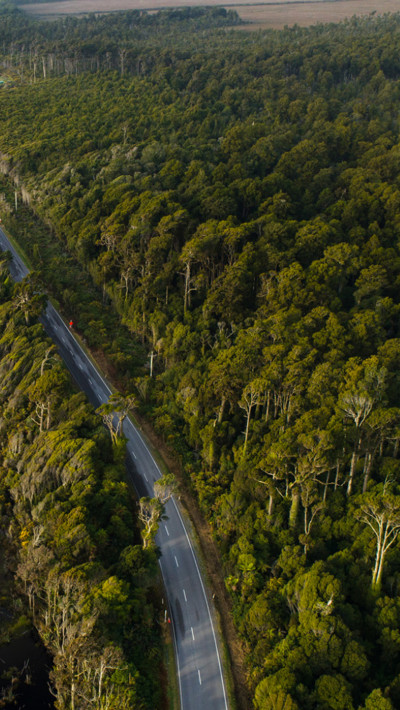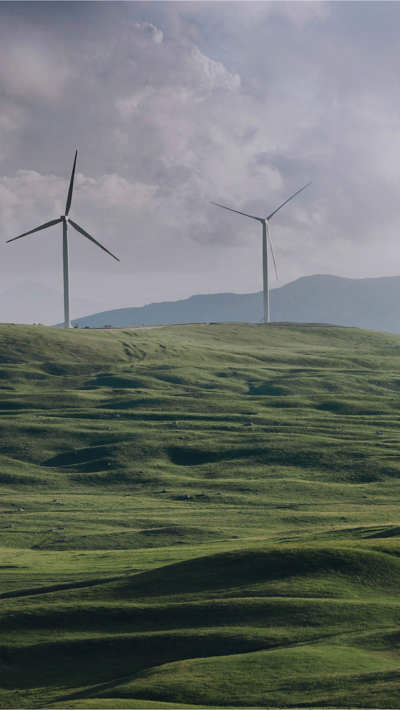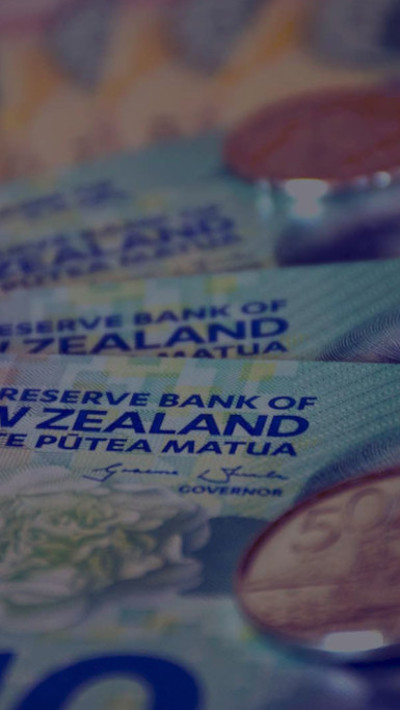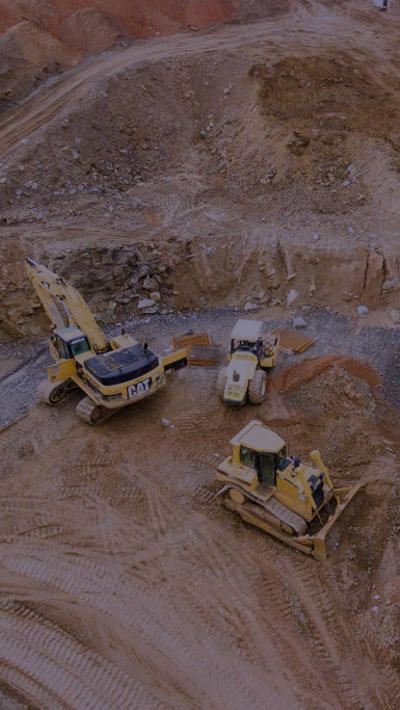Contents
Achieving the Paris Agreement ambition of containing global warming to 1.5°C above pre-industrial levels will require an economic recalibration of scale and speed “with no documented historic precedent”, according to the Intergovernmental Panel on Climate Change (IPCC).
We look at the sorts of investment decisions this will require on the ground, and at the risks and opportunities it will create – and, is already creating.
This is the fifth instalment in our Building resilience to climate change series. Previous instalments covered insurance, governance, local government and green financing.
The scope of the challenge
Larry Fink, Chair and CEO of investment management firm Blackrock, which has roughly US$6tn global assets, warned CEOs in January that the world is on the edge of a “fundamental reshaping” of finance.1
“Over the 40 years of my career… I have witnessed a number of financial crises and challenges – the inflation spikes of the 1970s and early 1980s, the Asian currency crisis in 1997, the dot-com bubble, and the global financial crisis…
“Climate change is different. Even if only a fraction of the projected impacts is realised, this is a much more structural, long-term crisis. Companies, investors and governments must prepare for a significant reallocation of capital”.
Various attempts have been made to quantify the extent of the global challenge. Two that have informed the New Zealand debate are from the IPCC and the International Energy Agency (IEA):
- the IPCC calculates that to hold average global temperature rise to 1.5°C by 2050, it will require a six-fold increase of capital investment into low carbon technologies and energy efficiency, and
- the IEA estimates that, to even have a 50-50 chance of limiting warming to 2°C, this will require global investments of US$75tn meeting energy needs without reliance on fossil fuels by 2040.
Investment cues in New Zealand
A range of policies are already in place to guide investment away from high emissions activities and toward a low emissions economy. They are a mix of carrot and stick.
Carrots
Examples include:
- New Zealand’s green investment bank, set up last year with a foundation budget of $100m facilitate investment in low emissions initiatives
- the Technology Demonstration Programme run by the Energy Efficiency and Conservation Authority (EECA), setup to promote technologies which reduce emissions or improve energy efficiency. Businesses can apply for up to 40% of a project’s costs to a maximum $100,000, or $250,000 for process heat projects
- the Low Emission Vehicles Contestable Fund – as at 19 February 2020, the Government had contributed $23.8m across 139 projects, matched by $50m from applicants, and
- the Afforestation Grant Scheme.
The “feebate” scheme promoted by the Greens would provide a rebate of up to $8,000 on emissions-efficient new or newly imported vehicles and impose a fee of up to $3,000 on the least efficient. However, its future is now in doubt due to opposition from both the National Party and New Zealand First.
Sticks
Currently, there is a heavier reliance on stick than carrot – a trend we expect will persist.
The leading policies in this area are the Zero Carbon Amendment Act’s emission reduction targets and budgets, and the Emissions Trading Scheme (ETS). The ETS took effect on 1 January 2008 and was diluted in 2009, but is now being substantially strengthened through the Climate Change Response (Emissions Trading Reform) Amendment Bill, which is due to be reported back to Parliament on 2 April 2020.
Proposed changes will:
- align New Zealand Unit (NZU) supply volumes with the five year budgets provided for under the Zero Carbon Amendment Act
- create an auctioning system for NZUs with a price floor (currently proposed at $20 per NZU) and remove the $25 fixed price option (effectively a price ceiling)
- start the phase-down of industrial allocations, and
- provide for a cost containment reserve which will contain prices by allowing extra NZUs to be fed into the market once an auction trigger price is reached (current proposed at $50 per NZU).
The current Government also sought to establish its climate change credentials early in its term by announcing, on 12 April 2018, a unilateral ban effective immediately on new offshore mining activity and on new onshore permits except in Taranaki (which has been granted a three year reprieve).
Since then, there has been a slew of announcements and proposals, including:
- the five year joint action plan to reduce on-farm emissions agreed by the Government and the farming sector in October 2019 (the commitments under which will be incorporated in legislation through the ETS reform)
- a proposed ban on new coal fired industrial boilers for temperatures below 300°C and the phasing out of existing low heat (below 100°C) boilers by 2030
- a proposed ban on new mining in the Department of Conservation estate. This was announced in the 2017 Speech from the Throne but has not yet been progressed
- the just-announced ban, effective from mid-2021, on KiwiSaver default funds investing in fossil fuels, and
- a proposed requirement, now out for discussion, that large energy users publish Corporate Energy Transition Plans (including annual emissions and plans to reduce emissions by 2030), and conduct energy audits every four years.
The Government is also consulting on a proposed mandatory regime which would require listed issuers to provide information on direct and indirect climate-related financial risks in their annual reports. We discuss this in more detail below.
Investment risks and opportunities
The Taskforce on Climate-related Financial Disclosures (TCFD), appointed by the G20 and led by Michael Bloomberg, made recommendations in 2017 that listed issuers, banks, insurers, asset owners and asset managers should be publicly disclosing their climate-related financial risk. It divided these risks into two types – transitional and physical.
We present their analysis below, adapted to the New Zealand context.
Transition risks and opportunities |
|||
|---|---|---|---|
|
Policy and legal |
Higher carbon prices | The key delivery mechanism for meeting the emissions budgets prepared under the Zero Carbon Act will be an effective carbon price | |
| Stronger reporting obligations | The Government is planning to introduce mandatory climate-related financial disclosure for listed companies and other entities | ||
| Mandates on, and regulation of existing products and services | New Zealand examples include the mining bans and the proposed moves to decarbonise industrial processes | ||
| Litigation | Climate-related litigation against governments and corporates has developed extensively overseas. In New Zealand, Iwi Leaders Group climate change spokesperson Mike Smith is suing seven New Zealand corporates, alleging that they are not doing enough to reduce their carbon footprint (Chapman Tripp is acting for three of the defendants). Smith has also filed a claim against the Government | ||
|
Technology |
Substitution of existing products and services with lower emission alternatives | An effective carbon price will create good economics around the adoption of lower emissions technologies. But substitution will create winners and losers, depending on where your product or service sits on the emissions spectrum | |
| Unsuccessful investment in, and/or the costs of transition to, lower emissions technologies | There are always risks associated with change. An issue to consider is whether to be an early adopter or to let the pioneers take the risk for you, accepting that there may be reputational risks associated with delay | ||
|
Market |
Changing consumer behaviour | The experience over the last 18 months is of a rapidly rising trend in public awareness of climate change, accompanied by an increasing willingness to use buying power to force change. We expect this trajectory will continue, generating sharp changes in consumer behaviour | |
| Uncertainty in market signals | Constraints on availability or increases in the costs of insurance and finance for businesses, or assets with high exposure to physical or transitional climate change risks | ||
| Increased cost of raw materials | The cost of emissions-intensive products (steel, cement, etc.) may increase as compliance costs increase. Supply chains may be affected as emissions compliance forces business movement and changes | ||
|
Reputational |
Shifts in consumer preferences | The latest Consumer NZ survey shows 69% of consumers want companies to do more to reduce the environmental impacts of their products | |
| Stigmatisation of the sector or industry | The fossil fuel industries are the main targets internationally for climate change activists. In New Zealand, some in the dairy industry are feeling under attack from metropolitan commentators | ||
| Increased shareholder concern or pressure |
Shareholder proposals were moved at the 2017 AGMs of Auckland International Airport and Meridian Energy asking that they “investigate other areas of business that reduce CO2 emissions”. Both failed At least 14 shareholder resolutions were filed in Australia last year seeking climate change action from ASX 200 listed issuers, including against major banks, insurers and energy companies |
||
Physical risks |
|||
|
Acute |
Increased frequency and severity of weather events (cyclones, floods, droughts) | These effects will create problems across the economy but will affect some sectors more than others. Bush fires arising from drought conditions create a risk for forestry, cyclones for electricity transmission, flooding for transport, and agriculture and tourism are vulnerable to any adverse weather event | |
|
Chronic |
Changes in rainfall patterns and extreme weather variability. Rising mean temperatures and seas | Business models may become unsustainable. In the agricultural sector, chronic changes may render regions in New Zealand unsuitable for traditional farming activities. Infrastructure assets in coastal or flood-prone areas may be at higher risk of becoming stranded or uninsurable | |
The severity and timing of these risks will depend on the extent of physical climate change impacts (noting the ever improving science on climate ‘tipping points’) and the nature and speed of climate change mitigation, both in New Zealand and globally.
Westpac New Zealand commissioned EY in 2018 to assess the implications for the New Zealand economy arising from climate change. EY modelled two scenarios each consistent with achieving a “two degree future” – a central scenario that assumed timely action, and a “shock scenario” that assumes a decade of relative inaction forcing a "handbrake turn" response to a rapidly deteriorating physical environment.
Scenario One would save NZ$30b GDP growth by 2050 relative to Scenario Two, and would enable a 32% lower carbon price.
A New Zealand take
The New Zealand Superannuation Fund published its climate change investment strategy in March 2019. Some aspects of this are peculiar to the Fund’s role as a large, long-haul institutional investor but much of it is universally relevant – in particular the “six lenses” the Fund applies through its “climate valuation framework” to assess how assets might be affected by the transition to a low carbon economy.
The six lenses
| 1 | Technology | The possibility of disruption driven by the emergence of new low carbon technologies |
| 2 | Resource availability | Slow onset shifts in everyday environmental factors |
| 3 | Physical damage | Vulnerability to acute, extreme weather events |
| 4 | Policy | The prospect of value-affecting regulatory and legislative interventions |
| 5 | Demand and supply | The risk that the market dynamics will be affected by economic and social changes |
| 6 | Liability | The potential for parties who have suffered loss or damage due to climate change to seek compensation from those held responsible. |
There will be industries, sectors and firms that do very well… because they will be part of the solution. But there will also be ones that lag behind and they will be punished. Companies that don’t adapt will go bankrupt without question.Mark Carney, outgoing Governor Bank of England
New disclosure requirements
The TCFD disclosure model has been widely adopted around the world, including by 80% of the top 1,100 global companies and by regulators in Australia, the UK and the European Union. It encourages organisations to disclose:
- their governance arrangements around how they will manage climate-related risks and opportunities, regardless of the materiality of that information, and
- the actual and potential impacts of climate-related risks and opportunities on the organisation’s business, strategy and financial planning, and the metrics and targets used to assess and manage such risks and opportunities, in each case to the extent such information is material.
The Government is considering introducing these requirements here on a mandatory (comply or explain) basis.
Proposals are to require listed companies, banks, general insurers, asset owners and asset managers to disclose financial risk from climate change in their annual reporting statements. Current indications are that entities with a March balance date will first need to report under the new requirements for the year ending 31 March 2023 (30 June 2023 for June balance dates).
The intent is that disclosure will make organisations more aware of these risks and of the need to mitigate them. This accords with:
- legal analysis, including an opinion that we prepared last year for the Aotearoa Circle, that climate change and the transition to a low carbon economy present foreseeable risks of financial harm which directors are obliged under their duties of care to have regard to in their decision-making, and
- guidance2 issued last year by the Australian accounting, auditing and assurance authorities on how, although the International Financial Reporting Standards (IFRS) do not explicitly mention climate change, they do address the financial impacts. In particular, the potential to create impairment of assets, to alter the fair value measurement of an asset and to give rise to contingent liability for litigation, fines or penalties.
Take-outs
Let’s end where we began – with Larry Fink. He considers that he has a responsibility to help the companies in which he invests his clients’ money to make the transition to a low emissions economy, and that sustainable investing “is the strongest foundation for client portfolios going forward”.
Adapted for general use, his advice is not only to exit investments and activities that present high sustainability-related risk but to make sustainability integral to your business decision-making and risk management.
More specific advice, reflecting the legal obligations discussed in our legal opinion, is that:
- directors must act reasonably to inform themselves about, consider and decide how to respond to climate change risk, as they would any other financial risk, and
- scheme managers must take climate change into account when making investment decisions and/or designing investment policies, where failure to do so could pose a material financial risk to the investment portfolio.
1 https://www.blackrock.com/corporate/investor-relations/larry-fink-ceo-letter
2 IFRS Standards and climate-related disclosures, In Brief, November 2019










































































































































